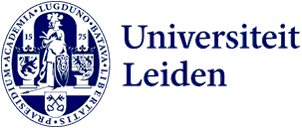
'Here I can grow in both science and art'
A passion for video games, visuals and science: it almost seems impossible to bring all of this together. Yet, scientific animator Vera Williams found that dream combination at NeCEN's microscopy lab. 'An image or animation can help clarify the content of complex research.'

It all started with a hobby: Williams loves video games and decides to enrol in the bachelor Game Art in Utrecht. 'But the course gave me too little structure so I changed to the bachelor's in microbiology. There I found the challenge and structure I was looking for.' Yet something was missing there as well. 'I couldn't express my creative side there.'
Whilst looking for an internship, she thought to herself: why not give 3D modelling a try? And she got the opportunity to do just that. 'I was allowed to spend a lot of time on it during my internship. That's how I accidentally found a super good combination between the things I like: microbiology and creativity.'

Working with data from the best microscopes
Williams wanted to explore that combination further. She started the master's programme in Media Technology. During that course, she learned more and more about animation. '3D animation is quite complicated. First, I took a step back and learned all the basics in 2D software. Once I was familiar with that, I could start working on the first real projects in 3D.'
After graduating, Williams started her own company: Animini. 'I still had a good relationship with the Briegel Lab where I had done my graduation project. I occasionally got assignments from there.' Now, Williams works for the research institute NeCEN. 'The best electron microscopes that currently exist are there. I use the 3D data that researchers from the Briegel Lab extract from these microscopes in my models and animations. In that case, it's not even an artistic impression, but really the output of the microscope. I try to stay as close to reality as possible.'

Valuable to make science more accessible
Not only is it impressive to see microscopic objects in 3D, but it also adds great value to the lab's research. 'Many papers are difficult to read. Especially when you have to describe a complex dynamic process in a compact way. An image or animation can help make the content of the research clearer. That can range from one picture to an animated video showing the whole storyline.'
In order to do so, Williams works a lot with scientists. 'Say they discover a particular receptor in the lab: what it looks like or how it moves, then I'll go from there. That starts with their work, their paper, and ideally I also have direct access to the scientist who did the research. Then, based on their paper, I start deciphering how exactly it works exactly. I want to understand it the best I possibly can so that I can also shape it as animation as correctly as possible.'

Her work on display at museum Boerhaave
In the past few months, Williams has been working on an animated video for the exhibition Unimaginable at Museum Boerhaave. 'It's an exhibition about Antoni van Leeuwenhoek, the 'father of microbiology'. The idea is to show with my animation how microscopy evolved from a small, handheld device to the metre-sized electron microscopes we have today.' The video is partly based on Alise Muok's research at the Briegel Lab. 'She discovered that molecules in the so-called chemoreceptor array are organised in a special way.'
Williams hopes to work a lot more with science and visuals in the future. 'There is still so much I want to learn, like the use of colours, light and story building. Animation has many facets, but that's exactly what I like about it. If I don't feel like animating for a moment, I can write on the storyline or draw. I can always keep learning and also really develop as an artist. And that gives me the prospect of a kind of infinite curiosity.'
A snippet from the animation for the exhibition at Boerhaave
Due to the selected cookie settings, we cannot show this video here.
Watch the video on the original website orUnimaginable - exhibition Museum Boerhaave
Want to learn more about the developments in microscopy? And would you like to see the work of Vera Williams? Then visit the exhibition 'Unimaginable' at the Boerhaave Museum.
For more information, go to the Boerhaave Museum website.
